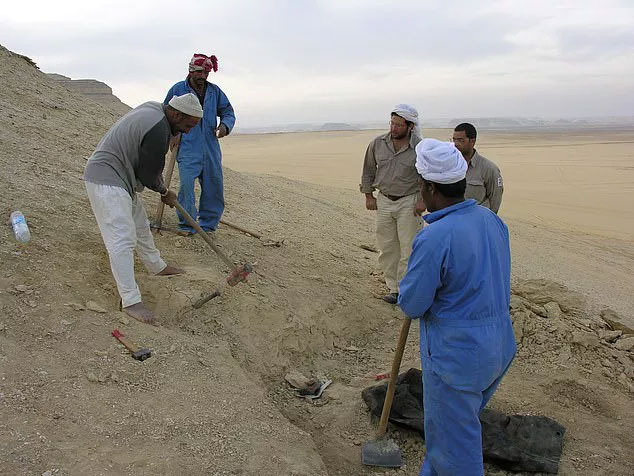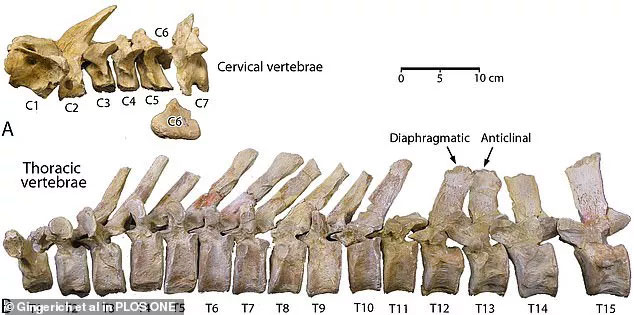The 35 million-year-old 'transfigured monster' appears in the Egyptian desert
A bizarre, almost intact, sea monster skeleton of great value for paleontology has been found in the Wadi Al Hitan whale valley (Egypt).
Whale is a mammal that has had one of the most amazing evolutionary steps on Earth: giving up the ground, gradually transforming itself in a way that destroys its legs, grows its tail and fins to live under. Ocean. Whale ancestors and even the first ocean whales have been unearthed, but this is the first time paleontologists have found an organism that belongs to an intermediate evolutionary ladder between the two. the aforementioned species - the magical "transformation" period of this species.

Archaeologists are unearthing the "strange" sea monsters "- (photo provided by the team).
The research team led by Dr. Philip Gingerich (University of Michigan, USA) called the "transfiguration monsters" they just found a "lost link".
The 3.7m-long creature is an entirely new species in the family of whales, named Aegicetus gehennae . It has a longer slender body and tail than the previous amphibian whales, the legs are also smaller and especially the hind legs are not firmly connected to the spine. Its spine is bigger and stronger than its ancestors, as a step to get ready to lose its legs and have to swim entirely with its tail in the future.

A close-up of the vertebrae shows the "transformation" process of this half-fish, half-mammal - (photo courtesy of the research team).
According to Dr. Gingerich, this creature swims the way crocodiles swim today. It was a 35 million year old male, estimated to weigh more than 900kg when alive. Meanwhile, the amphibian whales lived between 41-47 million years ago, while the first whales have the appearance of modern whales appeared 37 million years ago.
The research has just been published in the scientific journal PLOS ONE.
"Whale Valley" Wadi Al Hitan is a UNESCO heritage site that used to provide biologists a lot of prehistoric whale skeletons. The special "monster" remains have been exposed after a landslide.
- The headless skeleton of a sea monster was 6 meters long
- Nghe An: Discovering a giant whale "monster" skeleton
- Decipher the mysterious sign in the Egyptian desert
- Digging the 250 million year old sea monster in the American desert
- The constant debate about the 300 million-year-old Tully monster
- The 70-million-year-old plesiosaur fossil resembles the Loch Ness monster
- Detection of 180 million year old sea monster fossils
- Loch Ness monster monster objects head up on the lake
- Study 2,500 year mummy of 14-year-old boy
- Decipher the mysterious death at the 9 million year old whale cemetery
- Found the true age of the Sahara desert?
- Discovering fossils of 250 million-year-old sea monsters
- The most exotic deserts in the world
- Surely the giant sea monster swam under the water, marveling at the truth
 'Fine laughs' - Scary and painful torture in ancient times
'Fine laughs' - Scary and painful torture in ancient times The sequence of numbers 142857 of the Egyptian pyramids is known as the strangest number in the world - Why?
The sequence of numbers 142857 of the Egyptian pyramids is known as the strangest number in the world - Why? History of the iron
History of the iron What is alum?
What is alum?